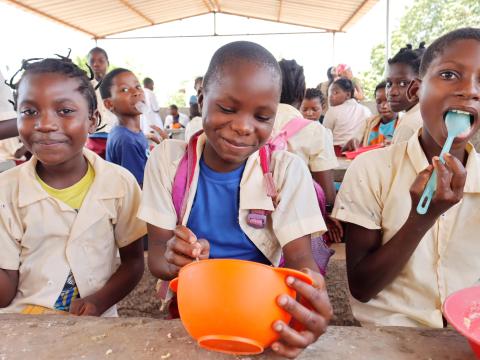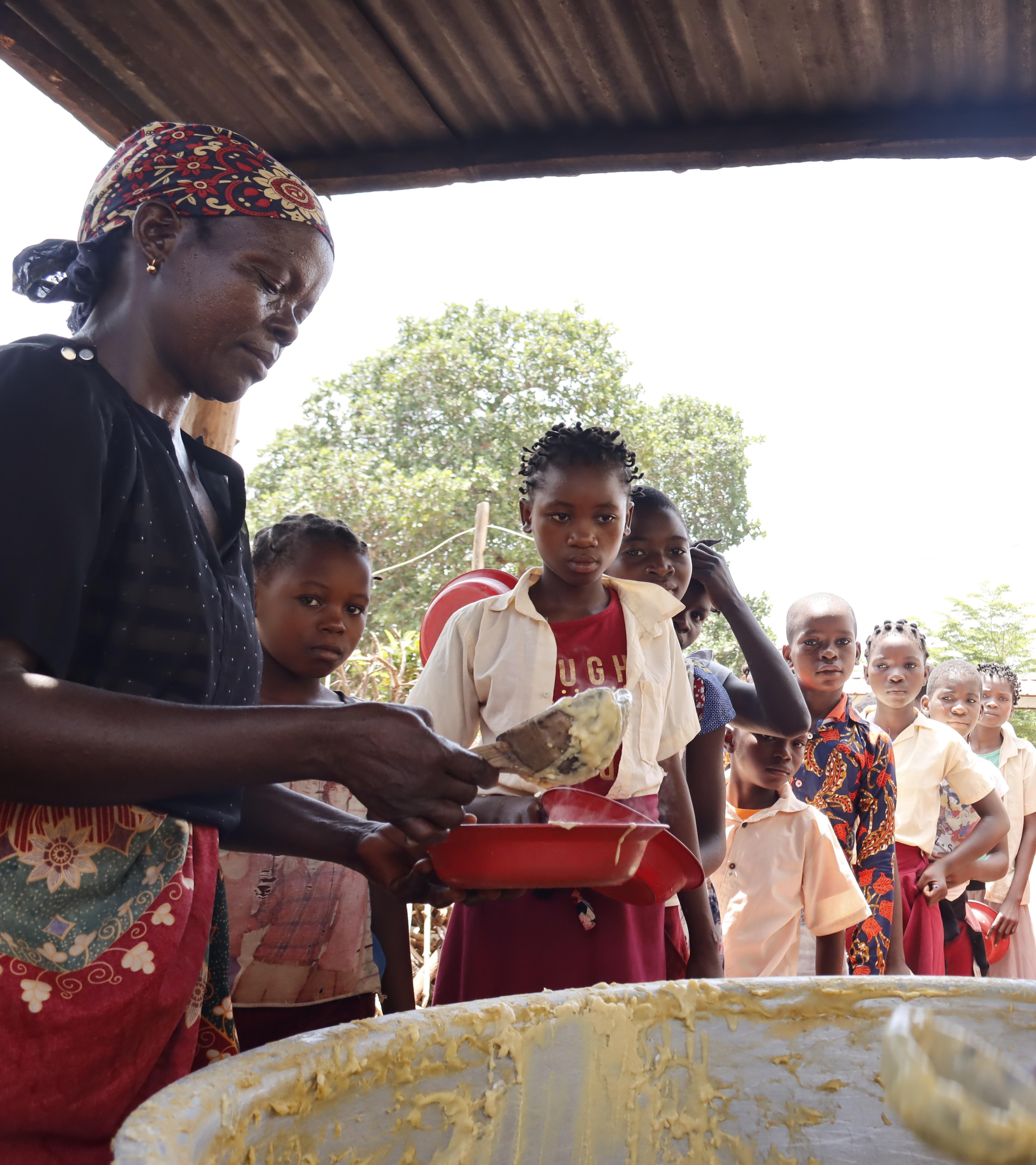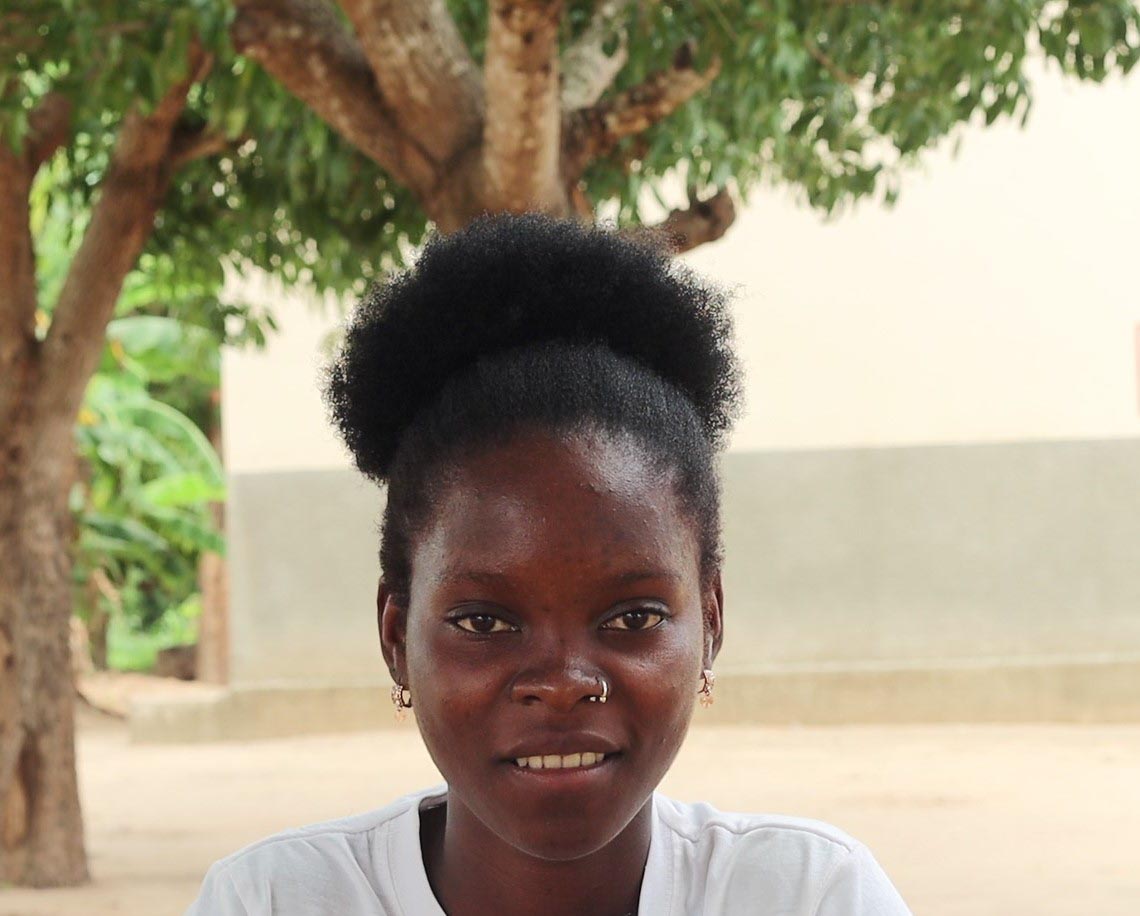School meals in Mozambique: Feeding children’s potential for success

For many of us, the basic privilege of enjoying a nice hot lunch is often taken for granted. Unfortunately, a significant number of children in the northern province of Nampula, Mozambique face the unsettling reality of not knowing when they will be able to have their next meal. This is especially true for children from rural families, whose livelihoods depend on unpredictable weather patterns.
Even if they are fortunate enough to eat three times a day, the nutritional content of their meals is often inadequate. Malnutrition, especially in early-ages, can affect long-term physical and cognitive development and leave children with weakened immune systems, making them more susceptible to infection, illness, and disease.
Children who are well-nourished are more likely to attend school regularly and are better able to focus and learn while in class. Although Nampula province has made some efforts to enhance child well-being, data shows that there is still considerable work to be done. The 2019/20 Household Budget Survey found that 47% of children under 5 (CU5) in Nampula province and 45% of CU5 in Zambézia province are stunted, making it likely that they start school undernourished.
Seeing the crucial role that proper nutrition plays in a child’s education and the great need in Nampula province, the Educating Children Together – Phase III (ECT-3) project provides school meals to more than 92,122 children (44,072 girls and 48,050 boys), in 160 schools in the districts of Muecate and Nacarôa.

The project is funded by the McGovern-Dole International Food for Education and Child Nutrition Program of the United States Department of Agriculture and is worth $26,700,300 US dollars. The project aims to improve literacy of school-age children focusing on improving the quality of literacy instruction, attentiveness, school attendance, and increasing the use of health and dietary practices.
Flora Miropo, a 6th grade student from Metepo Primary School in Muecate, cherishes every meal prepared in her school, because she believes it keeps students like her motivated. “When we leave our homes to go to school, we usually leave without eating, and we take our meals at school and come home well-fed. That is why I’m grateful for the support in providing meals in Metepo Primary School,” said Flora expressing her appreciation.
Her father, Manuel Miropo, is fully aware of the hardships many parents in his community face to provide quality food for their children and sees that the project is making a difference in their lives. “At home, sometimes our children don’t have enough to eat. That is why one of the things I like the most in this project is the meals, because we know our children do not starve while studying,” said Manuel.
Felismino Goriate has been the school director of Metepo Primary School for the past eight years and has been witness to the transformations that have taken place to positively impact the school and its students.
“The Metepo Primary School was founded in 1959. Since then, the green light appeared in 2019 when ECT-phase II built three classrooms with resilient materials. Before, the school had precarious classrooms and every time a major storm came, it destroyed the classrooms. The children themselves sat on the floor. But now, they learn in decent classrooms,” he states.

As the school meals include a porridge of fortified Corn Soya Blend, Goriate is confident that this is a positive nutritional alternative for many students, whose families rely mainly on cassava-based dishes that have low nutritional inputs. Community-level health and nutrition education efforts further enhance the adoption of best practices for dietary diversity at the household level.
In the heart of Nampula province, amidst the challenges of rural life, a beacon of hope emerges through the simple act of providing nourishing school meals. With each meal served, the Educating Children Together project not only fills bellies but also fuels dreams—so that children like Flora have the chance to reach for the stars.